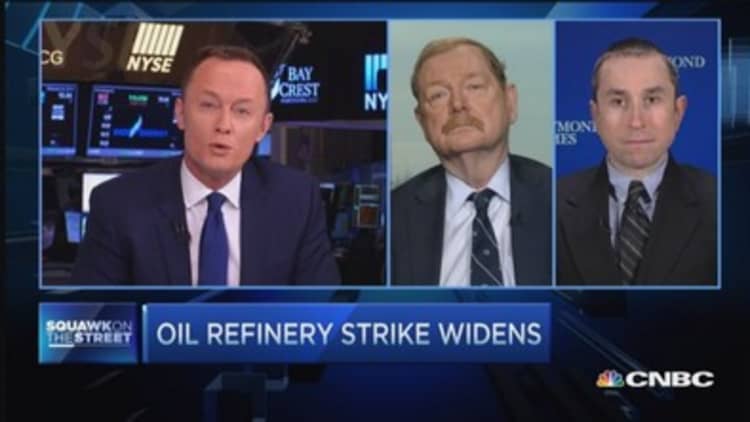
Concern over the United Steelworkers' largest strike in 35 years grew on Sunday, as it entered its fourth week. The strike spreads over 12 oil refineries and affects about 20 percent of the U.S.' production.
Nevertheless, one expert suggests that more information is required to assess the strike's full impact on the U.S. and world economy. "So far, we've seen crude stocks build in the United States to over 400 million barrels, [according to] data from the EIA and API," John Felmy, chief economist at the American Petroleum Institute, told CNBC's "Squawk on the Street" on Monday. "But remember, this only part of the world's supply and stocks. We only have data for the United States.… We really don't know what's going on outside of this area."
Felmy added, however, that recent production data looks promising. "If you look at the data of the last four weeks, production of fuel has been relatively constant and at very high levels. So far, things are looking very good," he said.
Read More Oil prices fall as dollar strengthens and oversupply adds pressure
WTI fell below $50 a barrel for the first time since late January to trade at about $49 Monday morning. Brent crude traded at $59.27.
Where will oil prices go?
Nevertheless, oil prices will ultimately go higher, a senior energy analyst at Raymond James & Associates said. "What we've seen is that they're bouncing along the bottom," Pavel Molchanov said in the same interview. "Whether we've seen the lows back in January or not doesn't make a huge difference because we're still in this bouncing stage."
"We think a more durable recovery will emerge after the middle of the year … with prices probably exiting the year in the $60s and then higher than that throughout 2016," Molchanov added.
—Reuters contributed to this report.


